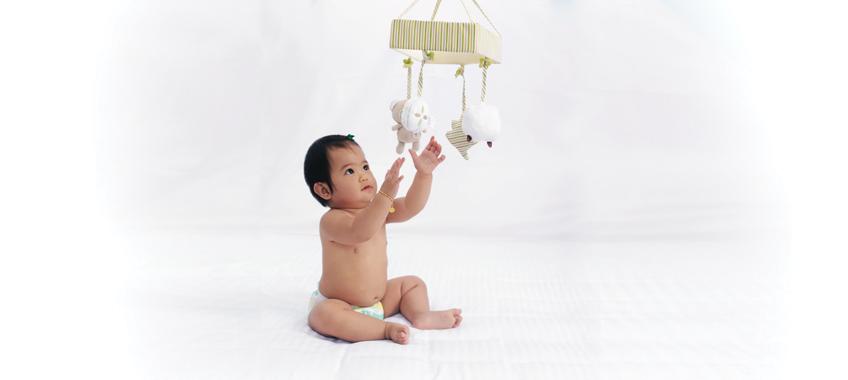Five Activities to Help Develop Fine Motor Skills
Once your baby discovers their hands, a world of wonder awaits them. Although learning to walk is a big milestone in your baby’s development, mastering their fine motor skills is no small achievement. According to Pediatric Occupational Therapist Dr. Rhoda Erhardt, it is through their hands that your baby demonstrates the link between thought and action. Developmental experts also say that manual dexterity is directly tied to cognitive development.
Babies don’t realize that they can use their hands until they are about 2 months old. At around 2 to 4 months, they will start trying to get things using their hands. They would swat objects, not knowing how to use their hands. This is the perfect time to try some activities to help develop their fine motor skills.
Below are some activities that help develop your baby’s fine motor skills.
- Hold It Tight (6 months and older)
Objective: This activity helps your baby learn how to develop grip.
Materials: Any objects or toys that can fit your baby’s hands, such as toy rattles or small stuffed toys. Use soft toys or toys that won’t harm your baby in case they cannot grip it properly.
How to do it:
- Pick one of your baby’s toys.
- Gently press the toy to your baby’s palm and help them close their fingers around the toy.
- Once your baby closes their hand around the toy, let go of it and see if your they can hold onto the toy on their own.
- If your baby is unable to hold on and drop the toy, just pick it up and put it back in their hands for them to try again.
- Be sure to use a soothing voice and have a lot of patience when teaching your baby. Repeat all the steps until they learn to grip different toys.
- Texture Box (9 months and older)
Objectives: This activity introduces different kinds of textures to your baby.
Materials: A box filled with objects of various textures, such as velvet and silk cloth swatches, smooth and rough fruits (e.g. apples and oranges), and others.
How to do it:
- Set your baby on the floor.
- Show your baby how to pick up the different objects inside the box.
- Try to get your baby to pick them up one by one.
- Transferring Toys (12 months and above)
Objective: This activity teaches your baby to grip onto an object and how to let go of it.
Materials:
- Two Boxes
- Soft toys of different shapes and sizes (stuffed toys, squeaky toys, plastic balls, etc.)
How to do it:
- This activity only works if your baby is able to sit up by themselves and crawl around.
- Place the boxes at least two feet apart and set your baby down between them.
- Fill one of the boxes with toys of different sizes.
- Teach your baby how to pick one toy up from that box and put it in the other box. Repeat the process until all the items have been transferred to the other box.
- Patience is required for this activity. Encourage your baby throughout the activity until they finish transferring the toys.
- Play with Clay (18 months and older)
Objective: This activity develops your baby’s finger control, improves hand-eye coordination, and introduces them to colors and shapes.
Materials:
- Modelling clay (different colors)
How to do it:
- Set your baby on the floor beside you.
- Take a handful of the modelling clay and mold it into any shape. Make sure to mold simple shapes that your baby can copy, such as triangles, squares, or circles.
- Encourage your baby to copy the shapes that you made using the same colors that you used to mold the shapes.
- Cool Colors! (18 months and older)
Objective: This develops your baby’s grip on an object for a long period of time, as well as hand-eye coordination and color recognition.
Materials:
- Coloring books
- Crayons (preferably non-toxic and larger in size for an easier grip)
How to do it:
- Set your baby on the floor with the coloring book propped open.
- Help them pick out a crayon and let them hold it.
- Slowly guide their hands in coloring the shapes and pictures on the book with the colors they like.
- Once they have a strong grip on the crayon, let go of their hands and let them finish coloring the pages by themselves.
These are just some of the activities your baby can do to develop their fine motor skills. With creative and fun exercises like these, you’re sure to spend some enjoyable moments with your baby.
Do you have more questions on child rearing? Learn more about them here.
You can also contact our EQ Support here.
Sources:
http://www.parents.com/baby/development/physical/encouraging-baby-motor-skill-development/
http://www.parents.com/baby/development/physical/fine-motor-milestones/
http://theimaginationtree.com/2014/03/fine-motor-skills-activities-babies.html

